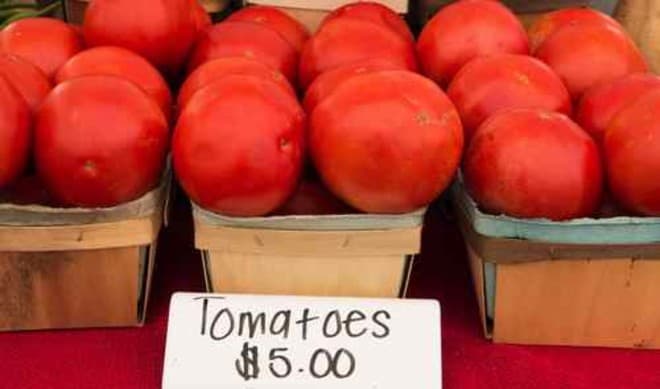You’d be hard pressed to find a farmer who got into the business of growing food because she loves crunching numbers; but understanding the economics of farming is a critical part of building a sustainable business. No farmer can have a truly sustainable plot of land unless it’s financially sustainable, too. That means keeping fields green and the bottom line black.
The winter season is a great time for farmers to take a step back from the daily grind and take a hard look at their business. For the savvy farmer this means planning ahead by reflecting on the past—and technology is here to help. Here are three free tools that will help farmers create timelines, calculate costs, and find new customers!
1. Seed to Harvest Timeline
Why is a crop plan important?
Farmers are working with limited resources: limited time, limited labor, and limited land. It’s important that they make a plan to maximize those resources. It’s also important to have an expectation of when a farm will start to generate revenue. To do this farmers need a crop plan, and this Google Spreadsheet allows them to quickly and easily map out a timeline for the growing season. Sharable URL: http://goo.gl/PN6jYz
2. Distribution Calculator
Why is it important to assess distribution costs?
Farmers need to understand all of the costs associated with their business. That means calculating the cost of marketing products and getting them to where they’ll be sold. But the cost of distributing products is not inconsequential. In fact, it’s critical. If farmers don’t tally up how much they’re spending to get food to market then how will they know what they need to sell just to break even?
This spreadsheet will walk farmers through nearly every conceivable cost they might incur while distributing their products. Sharable URL: http://goo.gl/5deFCP
3. Farmer <3 Food Buyer Matchmaking Tool
Why is networking important?
“Build it and they will come” may work for baseball fields, but it certainly doesn’t work for farming. To sell products, farmers need connect with the people in their community who are helping them build a better food system. Without a strong market for their products, all farmers will have is a lot of pretty looking compost.
The catch is that working from sun up to sun down doesn’t leave a lot of time for networking. That’s why it’s important for farmers to leverage digital tools like this one where farmers can list the products they plan to grow and food buyers can easily make a wish list. When matches are made (e.g., a chef “wishes” for something that a farmer plans to grow) emails are sent to both parties and the rest is up to them. My hope is that greater transparency about supply and demand will lead to a more robust local food system. And with better digital tools for farmers I think we can help all kinds of growers keep better records, share more infomration, and colloaborate on ways to grow food more sustainably for generations to come!
Sign up for Food Tank’s FREE Weekly Newsletter. More than 110,000 Subscribers And Counting. Click HERE to join.













